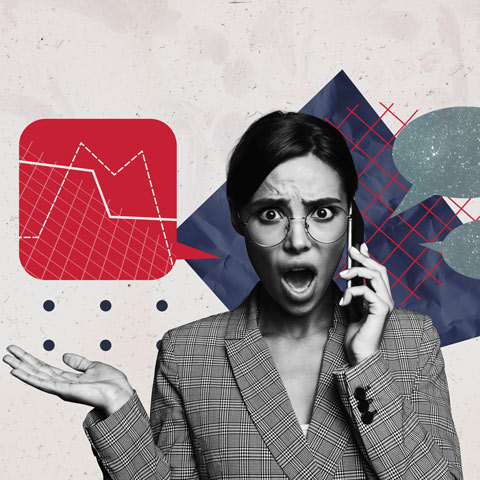Behavioural Email: Beyond Basket Abandonment

Up to 87% of shoppers abandon their shopping baskets before completing a purchase. These people have got close to buying and should be marketers hottest prospects. A basket abandonment email (implemented after a consumer casts their shopping basket aside) typically generates extra sales of 2% to 4% and a healthy return on investment. So it is surprising that over 90% of websites do not follow up on abandoned shopping carts. However, improving conversion through behavioural email doesn’t have to stop at just targeting abandoners. There are many types of online behaviours marketers can exploit. Creating automated email programmes relevant to different types of behaviour and different levels of engagement is one of the most effective ways to increase online sales. This whitepaper will look beyond basket abandonment and discuss the different types of automated behavioural triggers you can use to convert more of your customers into buyers while requiring little extra resource from you.
Get the downloadBelow is an excerpt of "Behavioural Email: Beyond Basket Abandonment". To get your free download, and unlimited access to the whole of bizibl.com, simply log in or join free. |

|
Beyond Basket Abandonment
Enquiry Programme
Prospects that have ‘raised their hands’with interest but not purchased should be targeted with communication relevant to what they have browsed for. Timing is vital for this communication as the user may buy elsewhere if you wait too long. Key actions on the site can be used to initiate these messages. Examples of this include; registering but not purchasing, requesting a brochure but not purchasing or adding a new interest on preference pages.
Nursery Programme
New customers represent a fantastic opportunity for incremental sales which is unfortunately all too often missed by ineffective communication. Target these heavily engaged users with relevant messages based on their browsing behaviour to show them you are the brand they want. Building up customer loyalty with relevant email communication can be the trigger to take a first time buyer to their second purchase, third purchase, fourth purchase and beyond. A nursery programme should build on the initial welcome email by adding further detail about your products and services on offer while also introducing the customer to any value added content within your website.
Behavioural Triggers (Content and Search)
The premise is simple; customers look at what they are interested in, use this behaviour to target people with relevant products and offers. Forrester Research says 58% of online marketers who deliver targeted content to customers report conversion rate lifts of 5% or more. Behavioural triggers can be automated to target users who engage with a particular product whether that be browsing the site or searching on the site or via an engine. This form of targeting is often completely missed as companies focus purely on what has been previously purchased through past campaigns. A simple automated triggered email based on an online search is easy to set up and will help build customer engagement.
Beyond Basket Abandonment
Up Sell / Cross Sell Programmes
Marketing Sherpa’s 2009 Ecommerce Benchmark Report found only 21% of consumer websites do any sort of targeted cross-sell/up-sell. Using a purchase follow-up behavioural email provides a simple and effective way to do this. Behavioural email enables targeting based on what people have looked at along with what they have purchased. Behavioural email can also be used to target customers who have bought from one product category but have been viewing another. Automating cross and up sell messages based on these behaviours pushes up sales volumes and average order value.
Want more like this?
Want more like this?
Insight delivered to your inbox
Keep up to date with our free email. Hand picked whitepapers and posts from our blog, as well as exclusive videos and webinar invitations keep our Users one step ahead.
By clicking 'SIGN UP', you agree to our Terms of Use and Privacy Policy


By clicking 'SIGN UP', you agree to our Terms of Use and Privacy Policy
Value Triggers
RFM (recency, frequency, monetary) segmentation is often used for campaign selection. By adding website and email engagement you can also initiate eRFM. To work in tandem with these campaigns automated behavioural value based communication can be an excellent instrument to convert high value sales. For big ticket items behavioural email can be used to push the recipient over the line using product information, additional imagery, testimonials and reviews; making that final decision to buy an easy one for the customer
Social Media Integration
Socially engaged customers are valuable. Use social media to extend your behavioural email marketing by targeting users with specific offers and news items which they can share around the web. By subdividing into a range of social specific segments it is possible to encourage sharing where relevant while also talking directly to those users who are most engaged‘socially’with your brand. Engaging with these potential advocates can supercharge your messages around the web. The key thing to remember here is to not just flood your users with offers and ads; encourage interaction, sharing, conversation and always actively listen. Friends, customers, enthusiasts, fans or "strangers with expertise" engage in social to discuss products so use segmentation to harness and build the positive vibe that this form of recommendation can have on your offering
Reengagement
Using behavioural data to understand when a customer is interacting with your email marketing and website is a good way to understand how engaged they are. Engagement is key to enable you to market to prospects and customers and ultimately to sell to them. Automate communication to keep people engaged; tweak the subject line, message and offer. You can also use engagement analysis and segmentation to spot people who buy on a cyclical basis (such as around a birthday or anniversary). Use this information to create automated and relevant messages to encourage a future purchase.
Churn
Using behavioural data along with transaction data in your customer analysis facilitates the identification of what combination of behaviours make a customer more likely to churn. Once these have been identified automated behavioural email campaigns can be initiated. Segmenting by lifetime value and risk enables you to set up automated behavioural email programmes to target your most valuable customers. This means you won’t be wasting offers and promotions on low value customers.
Win Back
If your reengagement programme is working perfectly there is an argument that win back programmes will never be needed. However customers rarely behave in a perfect way and therefore win back programmes are a key part of lifecycle marketing. Two themes are central to a successful win back programme; timing and a compelling reason to reengage
Conclusion
As abandoned basket email becomes more talked about in the online world, marketers are beginning to understand the benefit of using email marketing to react to user behaviour in order to improve conversion. However, basket abandonment is just one form of behavioural email. Behavioural email provides marketers with the opportunity to create relevant, targeted emails for any stage of the buying cycle; helping you create more sales from the moment a user appears on your website. Simple behavioural emails such as‘nursery’or‘cross sell’ are as easy to set up as a basket abandonment trigger and can be just as effective in improving conversion, sales and average order value. Fig 1 shows how the customer lifecycle can be managed through the application of automated behavioural email programmes.
Through analysing online customer behaviour marketers can assess how valuable their customers are. In short; the more the customer buys, the more valuable they become. By producing a fully automated behavioural email programme to react to behaviour, marketers will not only increase email conversion (as emails become more relevant to the customer) but will also increase ROI as they spend less time targeting low value customers and more time targeting high value customers.
As consumers become savvier about how they respond to marketing communication, email marketers must ensure they are continuing to engage and react to each recipient, based on where they are in the buying cycle. This may be a recent abandoner, a first time buyer or a regular customer. Abandonment therefore, is just the start.
Want more like this?
Want more like this?
Insight delivered to your inbox
Keep up to date with our free email. Hand picked whitepapers and posts from our blog, as well as exclusive videos and webinar invitations keep our Users one step ahead.
By clicking 'SIGN UP', you agree to our Terms of Use and Privacy Policy


By clicking 'SIGN UP', you agree to our Terms of Use and Privacy Policy









